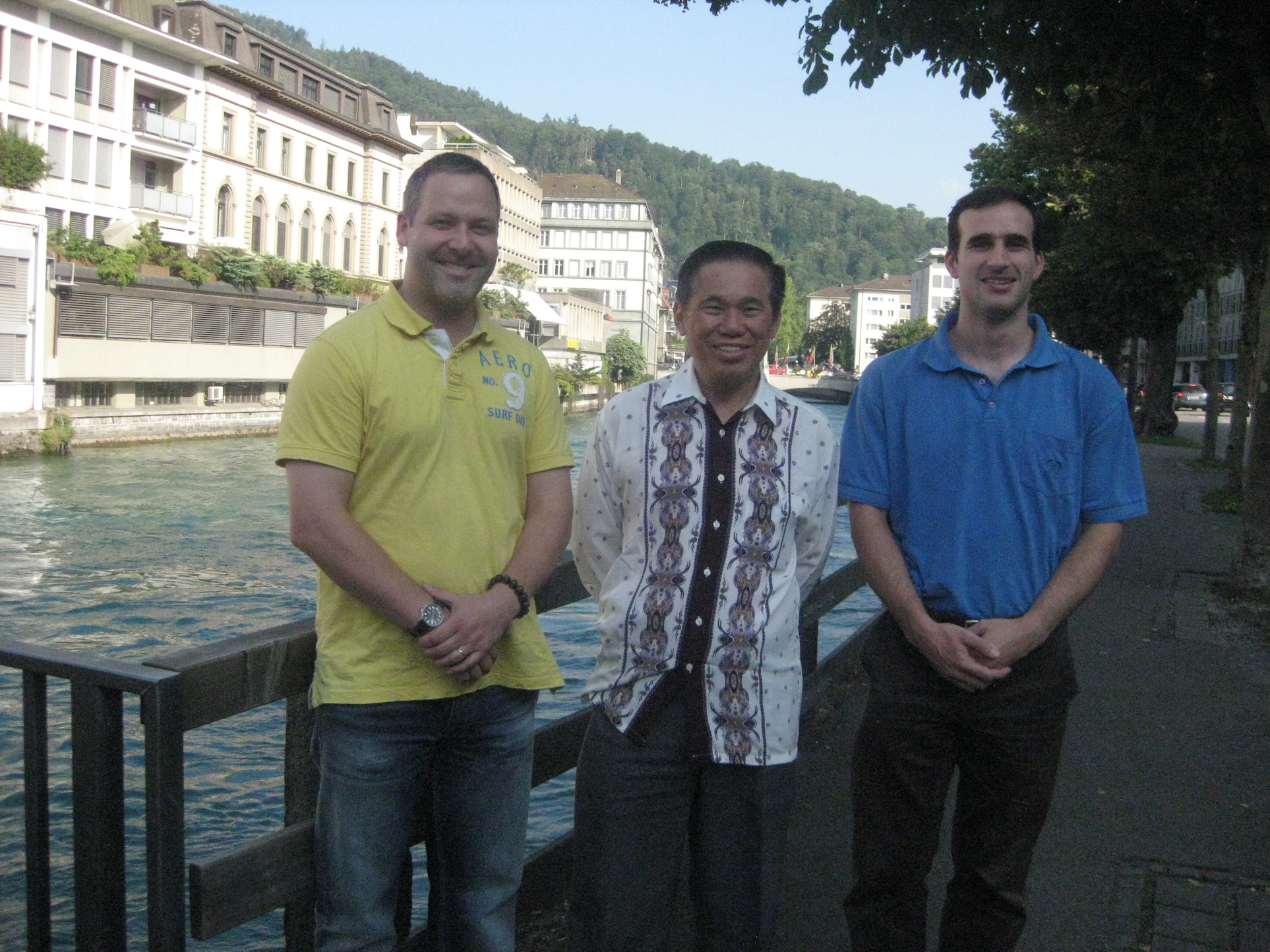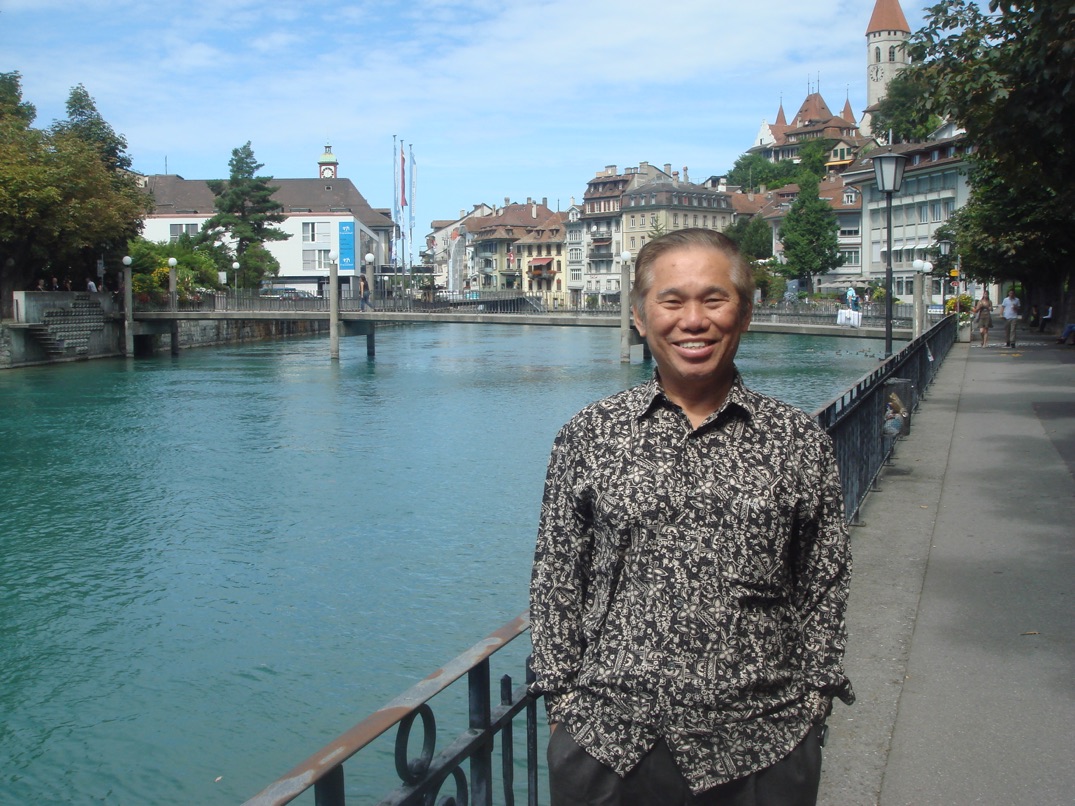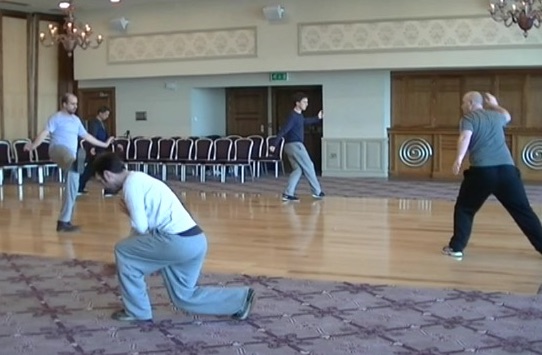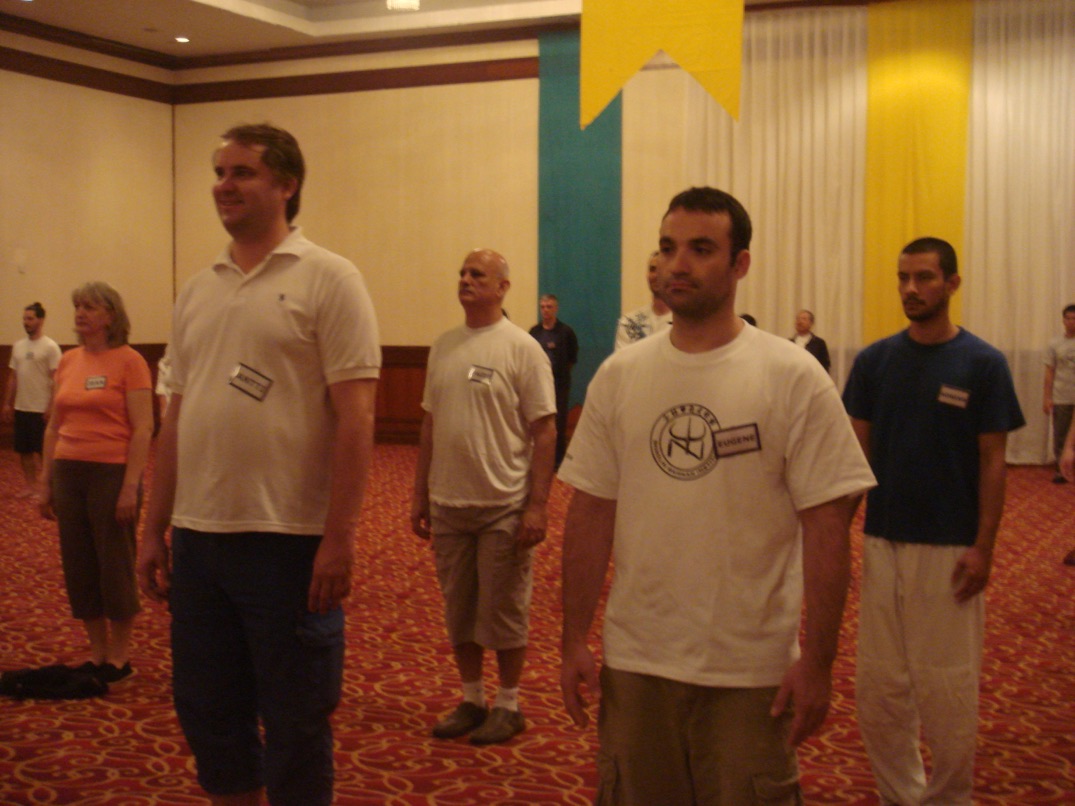SELECTION OF QUESTIONS AND ANSWERS
MAY 2017 PART 1

Our Shaolin Wahnam philosophy is to live life comfortably and meaningfully
Question 1
Previously, while practicing different martial arts, there was a dissonance between wanting a preconceived notion of mastery and the way I was going about it. Constant injury, aggression, depression and anxiety seemed to be my only companions on the path just to be able to take a few blows like a man, and to have hard shins and carrying around almost constant neck injuries.
— John, France
Answer
This is a mistaken concept of a fighter that many modern martial artists hope to emulate. This is grossly mistaken. One who is constantly injured is never a good fighter.
Better than a good fighter is a master. A genuine master is elegant, soft-spoken, enjoys life wholesomely, and is never injured.
Question 2
The benefits are comparatively few. Confidence perhaps, and fitness. Though as you elucidated so well on the Wudang Course, the huge difference between fitness and good health. It was a real 'ah-haaa' moment for me.
Answer
Professional fighters are fit, but not healthy. Amateur fighters are not even fit. They endure pain and suffer from injuries most of the time. An injured person in pain cannot be said to be fit.
There is a crucial difference between being fit and being healthy. Muay Thai fighters, for example, are fit. They can fight for many rounds and are not tired, but they are depressed, and surprising to some people, they often lack confidence.

Smiling from the Heart
Question 3
Champions in that arena of combat sports are men whose nature is often to destroy themselves in order to destroy their opponent.
Answer
The philosophy of Chinese martial arts is different. It is live and let live.
Our Shaolin Wahnam philosophy is even better. It is to live comfortably and meaningfully, and help others to live comfortably and meaningfully.
Question 4
At the Generating Energy Flow course in Korea while in Chi Flow, I felt my mind guide my punch. It opened my heart and I felt an explosion of pure joy in my heart, like a flower blooming in a shower of golden rain.
Answer
Using mind to direct energy to direct form is considered very high-level martial art. But we do this in Shaolin Wahnam, especially in the San Feng Wudang Set course in Ireland.
Opening your heart is a wonderful experience. We do this every time we practice our art when we smile from the heart.
Editorial Note: John's other questions can be found in the following issued, May 2017 Part 2, of the Question-Answer Series.

At the San Feng Wudang Set course, participants used mind to move form
Question 5
May I kindly ask if you would ever be interested in teaching and guiding us how to systematically access all these 13 states of meditative mind in order to enhance our skills in mind training?
— Olli, Finland
Answer
I am already doing this, and you have direct confirmation from taking just one course.
But our purpose of training is different. Monks use the eight dhyana states or the thirteen states of meditative minds in Theravada Buddhism to attain Enlightenment. Others practice for curiosity.
But we are not ready for perfect Enlightenment yet, and we do not train just for curiosity. We train to have good health, vitality, longevity, mental clarity and spiritual joys as well as peak performance in daily life. Your attainment in the Zen course, for example, enables you to have mental clarity, spiritual joys and peak performance.
Editorial Note: Olli's other questions can be found in the preceding issued, April 2017 Part 3, of the Question-Answer Series.
Question 6
The Theravada Buddhist tradition puts a lot of emphasis on mindfulness and achieving some recognizably stable plateaus of the mind called the three Stream Entries. Could you please tell how these are related to our development of skills in Shaolin Wahnam?
Answer
The three fetters of Stream Entry in the Theravada Buddhist tradition are similar to as well as very different from our development of skills in Shaolin Wahnam.
The three fetters of Stream Entry are a close mind, doubt and regarding rites and rituals as ends themselves instead of as means to ends. Followers of the Theravada Buddhist tradition use the Four Noble Truths as principles, and the Eight-Fold Path as practice. Their purpose is to attain Enlightenment, or at least to lay a moral foundation to approach Enlightenment.
A close mind, doubt and confusing means for ends are also hindrance in our development of skills. Herein is the similarity. The difference lies in methods and purposes.
As a matter of policy, we do not waste time on those who close their mind to our arts. In fact, we only teach those who are deserving. If their mind is close or if they are disrespectful, we consider them undeserving.
Oddly, some people think that a true master must teach any Tom, Dick and Harry if the latter indicates that he wants to learn. Obviously we do not subscribe to this way of thinking.
Our evidence convincingly overcomes doubt. Those who doubt that internal force exists, soon develop internal force. Those who doubt that kungfu can be used for combat, soon use kungfu for combat. Those who doubt that they can solve their problems in 15 minutes or give an impromptu speech, do so convincingly, as we did in the Zen course in Dublin.
We are also very clear about means and ends. In our training, we know that techniques are means. The ends are to get the results our training is meant to give. To go a step further, our training is a means. The end is to enrich our lives and the lives of other deserving people.
Our purpose to overcome the hindrances is different from that of the Theravada Buddhist tradition. We also place great emphasis on a moral foundation, like practicing our Ten Shaolin Laws, but we are not ready for perfect Enlightenment yet. We dedicate ourselves to our training because we want to lead a rewarding, meaningful life for ourselves and others.

Small Universe
Question 7
Does the Small Universe, for example, correspond to one of the three fetters of Stream Entry?
— Michel, France
Answer
No, the Small Universe does not correspond to any one, two or all the three fetters of Stream Entry. The Small Universe is an advanced method of cultivation, whereas the three fetters are hindrances which need to be overcome before cultivation begins.
Question 8
How does a Theravada Arhat compare to a Shaolin Wahnam master in terms of mind training, good health, and spiritual attainment?
— Vero, Uruguay
Answer
A Theravada Arhat, not a Theravada monk, is far superior to any Shaolin Wahnam master in terms of mind training, good health, and spiritual attainment.
"Arhat' is a Pali word. In Sanskrit it is "Arahan", and in Chinese "Lohan". The Eighteen Lohan Hands is named in honour of the Arhats.
LINKS
Selected Reading
- What is Zen
- How does Chi Relate to Muschles in Internal Force Training
- Combat Sequences of Tantui
- Geting to Opponents' Back and its Counter
- The Valley of Monuments
